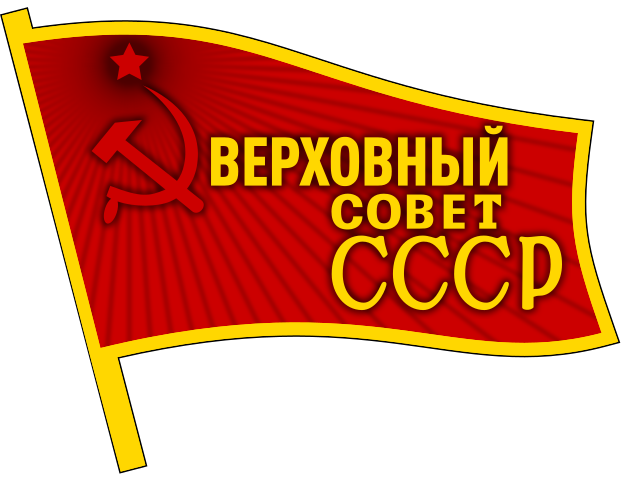Top Qs
Timeline
Chat
Perspective
Supreme Soviet
Legislatures of the constituent republics of the Soviet Union From Wikipedia, the free encyclopedia
Remove ads
The Supreme Soviet (Russian: Верховный Совет, romanized: Verkhovny Sovet, lit. 'Supreme Council') was the common name for the highest organs of state authority of the Soviet socialist republics (SSR) in the Union of Soviet Socialist Republics (USSR). These soviets were modeled after the Supreme Soviet of the USSR, established in 1938, and were nearly identical.[1]

Party-approved delegates to the Supreme Soviets were periodically elected unopposed in show elections.[2] The first free or semi-free elections took place during perestroika in late 1980s, in which Supreme Soviets themselves were no longer directly elected. Instead, Supreme Soviets were appointed by directly elected Congresses of People's Deputies based somewhat on the Congresses of Soviets that preceded the Supreme Soviets. The soviets until then were largely rubber-stamp institutions, approving decisions handed to them by the Communist Party of the USSR or of each SSR.[2]
The soviets met infrequently (often only twice a year for only several days) and elected the Presidium of the Supreme Soviet, a permanent body, to act on their behalf while the soviet was not in session.[3] The presidiums were also empowered to issue decrees in lieu of law. If such decrees were not ratified by the Supreme Soviet at its next session, they were to be considered revoked. In practice, the principles of democratic centralism meant this power of veto was almost never exercised, meaning that Presidium decrees de facto had the force of law.[4]
Under the 1936 and 1977 Soviet Constitutions, the Presidium of a Supreme Soviet served as the collective head of state of its republic.[5] The Supreme Soviets also elected Councils of Ministers (Councils of People's Commissars before 1946), which were executive bodies.
After the dissolution of the USSR in late December 1991, the soviets transformed into liberal democratic legislatures of independent countries until Armenia, Azerbaijan and Kazakhstan abandoned the system in 1995.
Remove ads
Supreme Soviets of the Soviet Republics
Summarize
Perspective
Soviet Republics dissolved before the dissolution of the Soviet Union
Remove ads
Supreme Soviets of the Autonomous Soviet Republics
Summarize
Perspective
Remove ads
References
See also
Wikiwand - on
Seamless Wikipedia browsing. On steroids.
Remove ads


























